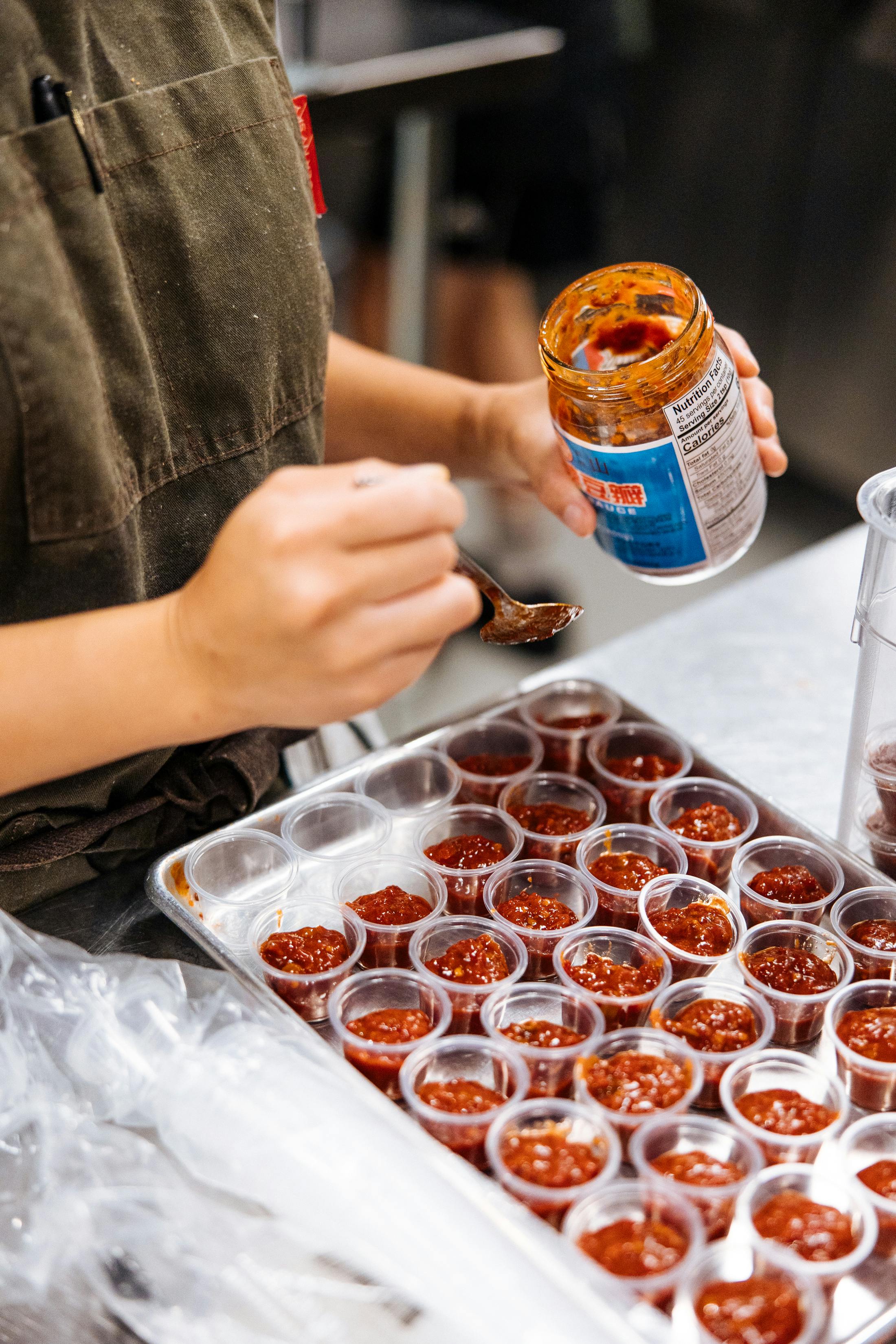Over the last few years, individuals have fastidiously become more and more concerned about what they eat and how it affects their personal health. As a result, current food trends have understandably surged in number and variety. And, as one might expect, the effect this has had on the F&B industry has resulted in significant changes in how many businesses function. With that in mind, let’s look at what the major current food trends will be in Australia in 2022.
1. More wholesome plant-based diets
Diets based primarily on fruits and vegetables have become enormously popular recently, with various people searching for better choices to improve their lifestyle. While there are a plethora of plant-based diets available out there, the Mediterranean diet has remained the top choice for many years because of its wide-ranging health benefits, including a stronger heart and other disease-preventing aspects.
This food trend is unlikely to disappear anytime soon, so there are many new plant protein companies, like Impossible and Beyond, that are capitalising on the movement.
In addition to the Mediterranean diet, the ketogenic (keto) diet and vegan diet have also gained significant traction. The keto diet emphasises high-fat, low-carbohydrate foods, which can help promote weight loss and improve metabolic health. On the other hand, the vegan diet excludes all animal products and focuses on plant-based foods, offering benefits such as lower cholesterol levels and reduced risk of certain diseases. These dietary choices reflect a growing awareness of the impact of food on health and the environment.
2. Home-style meals
Being stuck at home wasn’t something anyone expected to be doing for years on end. But with the ongoing influence of COVID-19 affecting the entire world and influencing people to avoid crowded restaurants even in 2022, cooking at home has been one of the predominant Australian food trends.
Australia is no different, as even if one wanted to eat out, unpredictable lockdowns and restrictions sometimes make it impossible. Given that, people have taken the opportunity to buy more cookware to boost their skills in their home kitchen.
3. Robotic food prep and delivery
Machines and artificial intelligence continue to be utilised in many different industries and the F&B sector is no different when it comes to adopting this rising trend. Fewer people have been available to work for various reasons, leaving quite a few food establishments in need of finding mechanically automated means to satisfy business demand in Australia.
One such restaurant is Tan Hot Pot in Melbourne, which uses robots to help deliver food to its customers. As the years progress, it’s only a matter of time before even more eateries become automated and hands-off.
4. Transparency of ingredients
People have become much more switched on in regards to wanting to know exactly what their food is made of and where it comes from. This food trend is on an upward trajectory and doesn’t show any signs of slowing down in 2022 or beyond, for that matter, as in a recent Innova Consumer Survey, 60% of consumers around the world stated as such.
The enduring effects of this customer behaviour have led producers in the F&B sector to seek out new technologies like blockchain to help keep track of where food has been, how it’s been handled, and the conditions in which ingredients have been shipped.
5. Improving individual immunity
The global pandemic has inspired everyone to seek food choices that improve one’s health and overall immune system. Whether it’s supplements, vitamins, or other foods that are known to help fight off diseases, it’s one of the key Australian food trends that the F&B industry is starting to take note of.
6. Online food & grocery delivery
Online food orders, including groceries, are yet another F&B trend that’ll continue to move upwards. In Australia alone, it’s expected that this market will hit US$2,280 million in 2022. And though that may not be much of a shock, what may be surprising is how Deutsche Bank estimates that the entire online grocery delivery market in the United States will jump to $120 billion in sales in 2025.
7. Food waste reduction
Creating less waste is an eating and F&B trend that has been around for a while, but recently, it has inspired the formation of groups like Stop Food Waste Australia. With technology allowing things like 3D food printing to exist in the F&B sector, there’s a certainty that it’s a trend that’ll keep going for the long term. There’s even a company in California called Apeel that creates an edible “skin” made from leftover agricultural products that helps prolong how long fresh produce can stay on the shelf.
The sustainability trend has significantly influenced the F&B industry, with a particular focus on reducing food waste and incorporating sustainable ingredients. Restaurants and food businesses are increasingly adopting practices such as utilising food scraps creatively, composting organic waste, and implementing portion control to minimise leftovers. Additionally, there is a growing emphasis on sourcing ingredients from local, organic, and ethically responsible suppliers to reduce the environmental footprint associated with food production and transportation. This shift towards sustainability not only aligns with consumer preferences for environmentally conscious practices but also promotes long-term viability and resilience within the food industry.
8. City-based agriculture
Growing food has historically always been a task that requires large tracts of land, but nowadays, there is a growing F&B trend that focuses on achieving agricultural success in urban areas. Such “ultraurban” farms are already taking off in Australia, with Modular Farms Australian and Pocket City Farms at the forefront of this niche.
9. Cashless payments
This F&B trend likely comes as no surprise as many people use it when eating out or even ordering food. As cash becomes less and less desirable as a transaction medium, restaurants and CloudKitchen® delivery kitchens are making it a point to provide different ways to pay, along with self-service stations.
10. Fusion Cuisine
Fusion cuisine, blending elements from different culinary traditions, continues to captivate Australian diners. In Australia, various culinary initiatives explore fusion cuisine, integrating diverse cooking styles and ingredients to create innovative dishes. These initiatives reflect a celebration of cultural diversity and culinary creativity, enriching the Australian dining experience and fostering appreciation for global gastronomic influences. One such initiative is Nikkei Australia, which is dedicated to promoting research, study, arts, cultural practices, and community information exchange about the Japanese diaspora in Australia. Through its efforts, Nikkei Australia contributes to the exploration and recognition of fusion cuisine and its significance within the Australian culinary landscape.
11. Rediscovery of Local Ingredients
The rediscovery and incorporation of local and native ingredients into modern Australian cuisine are reshaping culinary landscapes across the country. There’s a growing appreciation for indigenous ingredients that not only reflect Australia’s rich cultural heritage but also offer unique flavours and textures to dishes.
Restaurants and chefs are increasingly sourcing ingredients like finger limes, warrigal greens, quandongs, and kangaroo, showcasing the diverse bounty of the Australian landscape. This Australian food trend not only celebrates the country’s culinary heritage but also promotes sustainable practices by supporting local producers and reducing reliance on imported goods.
By embracing indigenous ingredients, modern Australian cuisine is evolving into a vibrant tapestry of flavours that pays homage to the land and its indigenous peoples.
12. Dark kitchens
Being an incredibly cost-effective solution to what has been a terribly unpredictable and long season for the F&B industry, CloudKitchen® delivery kitchens are sure to grow increasingly popular as a current food trend in 2022. By giving businesses the ability to work at lower price points and simultaneously gain access to local customer bases in Australia, CloudKitchen® delivery kitchens are a modern answer to today’s demands.
If you need assistance in getting your personal CloudKitchen® delivery kitchen in Australia, just fill out the form at the bottom, and we’ll get in touch with you soon!

